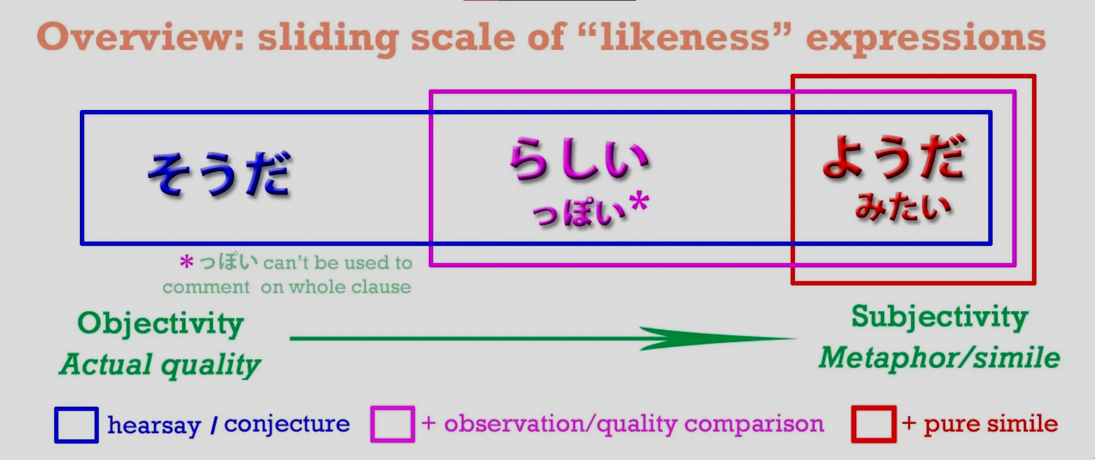 Mức thấp và chung nhất là: らしい・そうだ・そうです・っぽい
Mức thấp và chung nhất là: らしい・そうだ・そうです・っぽい
ようだ can go much further. It can make an actual metaphor or simile.
まるで風のように走った - ran just like the wind. Literally, まるで means roundly
Bàn về ようだ một chút, ví dụ như trong まるでゆうれいを見たかのような顔をした - She had a face (or made a face) exactly as if she had seen a ghost, Trợ từ か được sử dụng ở đây để gói toàn bộ nội dung vế trước thành một mệnh đề (?) nghĩa kiểu như: "Như thể".
Từ まるで được được đi kèm lắm.
Bản thân từ よう is a form or a likeness - やまのよう is the form of a mountain, 風のよう is the form or likeness of the wind
Còn みたい is the less formal cousin of よう and broadly means the same thing and broadly can be used in the same ways. It's an adjectival noun just like that よう, can be used with に to make it an adverb or with な to make it a before-the noun adjective just as any adjectival noun can be. The main things to remember about it is simply that it's less formal.
You can use it with a complete sentence in order to conjecture that that statement is the case, but you can't use it with か to use a complete sentence as a simile. You have to use かのようだ/かのように for that.
Một số ví dụ như:
- まるで何事もなかったかのように立ち上がった。: Đứng lên như thể không có chuyện gì vậy.
- 借りてきた猫のように大人しくなった。: Trở nên ngoan ngoãn (kiểu như?) một cách khó tả...
- 人をマッドサイエンティストみたいに言わないでください: Đừng có nói người ta như thể là mấy nhà bác học điên...
Dùng cực nhiều trong Light Novel :)). Đọc thử một cuốn và cảm giác như cứ đọc 2 câu là một câu dùng のように ấy. À khoan đã phải là ように vậy thôi mới đúng chứ!